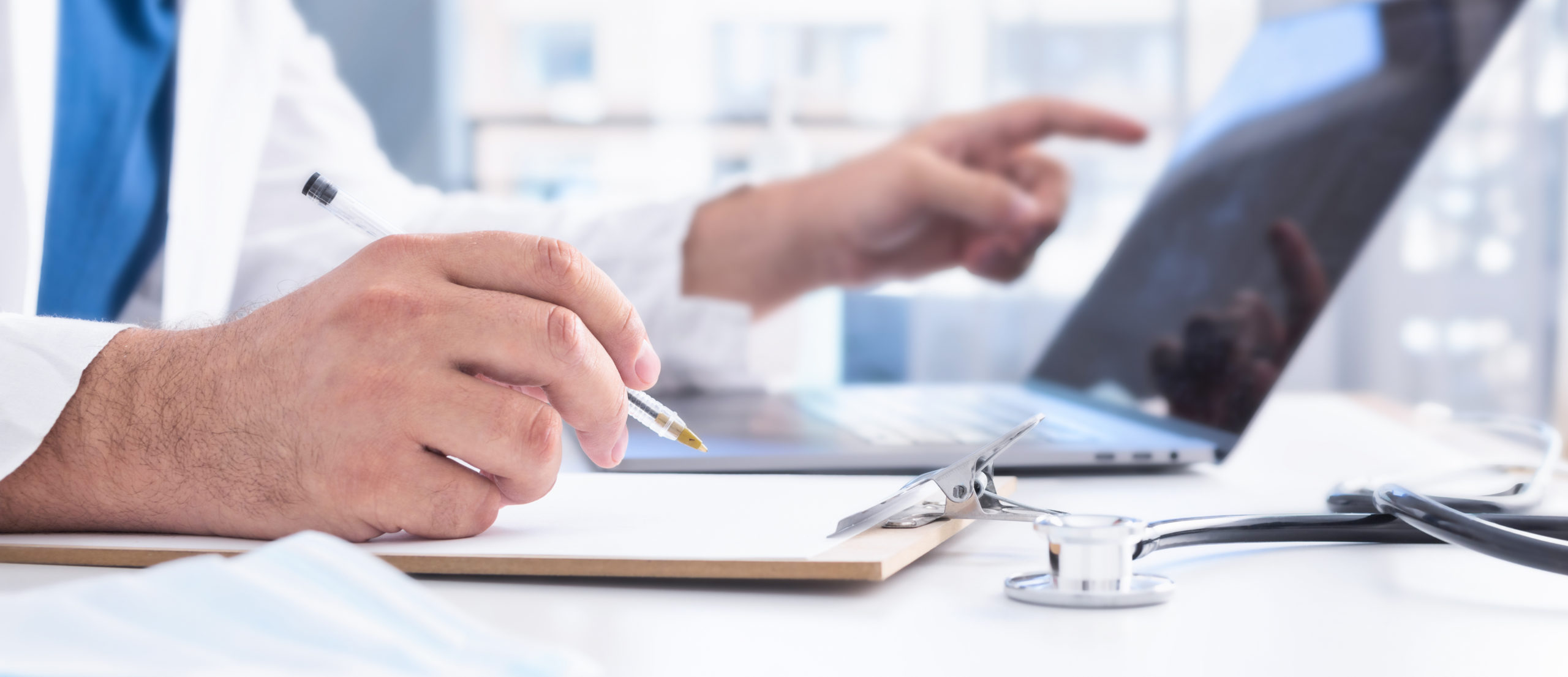
The importance of a modern workplace for healthcare
Uncertainty brought about because of the global pandemic has brought the need for a modern workplace right to the forefront of organisational priorities. The ability to support a mobile workforce, with flexible and secure access to their data and applications, using productivity and enterprise collaboration tooling included in the Microsoft 365 technology stack, underpin the […]
Uncertainty brought about because of the global pandemic has brought the need for a modern workplace right to the forefront of organisational priorities.
The ability to support a mobile workforce, with flexible and secure access to their data and applications, using productivity and enterprise collaboration tooling included in the Microsoft 365 technology stack, underpin the capabilities required for end users to be able to do their jobs. This is even more crucial to our healthcare organisations in the UK, who have found themselves challenged over the course of this year by the global healthcare crisis.
Our NHS has been faced with unprecedented demand for critical care and a requirement to work in new and different ways often while hampered by legacy technology and systems, such as Windows 7 or older versions of Microsoft Office. As we move into 2021, and the second year of responding to the global health crisis caused by COVID-19, it is imperative that health organisations are set up with the right tools to allow them to work effectively and deliver patient care in the most effective and efficient way possible.
Our approach to a modern workplace is supported with a methodology that addresses both the technical and business capabilities required to transition an organisation. Central to this is the ability to provide an end user experience that enables its workforce to be effective and productive in their roles, regardless of device or location.
What’s our definition of a modern workplace?
The implementation of a modern workplace is key for any organisation in making what Microsoft are terming, the ‘Modern Work’ transition. To support this, we deploy the tools and services available in the Microsoft 365 technology stack as the foundational technology to allow teams to work together collaboratively, starting with the move to Windows 10 and Microsoft 365 Apps (previously Office Pro-Plus).
Modern Workplace Standard Design Approach
Our approach is not role specific or affiliated with any particular business unit or back office function, but rather gives an organisation the means to create, manage and distribute its information, content and knowledge in a way that provides maximum flexibility and benefit to the workforce.
A well implemented and, in some instances, mature modern workplace is particularly advantageous for healthcare organisations as it delivers significant productivity benefits, and allows for more flexibility in how clinicians and healthcare staff work and collaborate with each other. Additionally, having more flexible and efficient tools available can free up time for patient-facing staff, allowing them to focus on the all-important job of treating patients, rather than struggling to get technology to work in the way that they need it to.
The ‘Modern Work’ journey
When we speak to our customers about what a modern workplace is and how it relates to the ‘Modern Work’ journey, we use our standard design approach model and overlay the phases in which the tools and services can help achieve positive business outcomes as the organisation’s technology footprint moves up the maturity curve.
A key takeaway from our approach is to ensure that our customers clearly understand the difference between delivering rich end-user functionality, such as the integration of Microsoft 365 workloads, and the tools and services that underpin these capabilities needed to support that seamless end user experience.
We typically start the modern work journey with the move from Windows 7 to Windows 10 – having a modern, up-to-date and supported Windows operating system is a key foundational element of delivering a modern workplace.
Evergreen and secure IT for a modern workplace
Windows 10 has been designed for modern computing in the modern world, and when deployed as a part of a Microsoft 365 transformation, the principle of evergreen IT ensures that all components of the service, both at a device and with its underlying infrastructure, remain up to date. Then there’s the issue of security, clearly a hot topic for healthcare organisations where sensitive personal data is at the heart of activities.
This modern workplace approach, delivers the following benefits for healthcare organisations:
- Significant improvements in productivity and efficiency – it’s easier to create, find, share, collaborate and consume content created within your healthcare organisation.
- Security by design – Windows 7 was released over a decade ago and is therefore more vulnerable to new and emerging security threats over Windows 10, whose underlying architecture features security at the core of its design.
- Enterprise-wide security – As part of a modern workplace transformation to Microsoft 365, Windows 10 includes enterprise-grade security services to protect end user devices, the services being consumed and the data accessed.
- Eliminate expensive support – A Windows 7 device will also no longer be providing a good end user experience, requiring IT departments to spend considerable time maintaining them.

How do we deliver a modern workplace?
Our modern workplace framework is a useful tool to drive the definition of an organisation’s technology roadmap. However, we recognise that current circumstances dictate that an organisation will unlikely be in a budgetary position to implement all the tools and services included in the technology footprint of what would be deemed a mature modern workplace framework. Therefore, our approach is to understand where an organisation’s most significant pain points are and to align them to the capabilities where the most benefit would be gained.
To achieve this, and in collaboration with our clients, we build a roadmap of transformation initiatives, detailing incremental improvements that, over time, will move an organisation along the maturity curve.
We use a robust and time-tested approach for the programme governance and implementation requirements of modern workplace solutions and services in order to maximise the benefits for healthcare organisations. Our approach:
- Provides organisations with more flexibility, enabling the workforce to work remotely or from home, using their preferred devices, while still ensuring effective security
- Enables improved collaboration and communication of the workforce across the organisation through access to new collaboration and productivity tools
- Offers improved intelligence and insight into data for the organisation from improved data visualisation and data monitoring tools
Furthermore, we can provide ongoing support and maintenance services for a modern workplace, including how to take full advantage of the new ways of working offered through customised user adoption training and education.
What next?
Now, highlighted by COVID-19, healthcare organisations are facing multiple workplace challenges. These include ever-increasing security threats, inefficiencies in communications/collaboration, a need for enhanced data sharing and, of course, demand for flexible working. This means there’s an immediate need to transform technology and the way people and processes operate, further stressed by Windows 7 reaching the end of its life.
The good news for healthcare organisations is that the global pandemic has accelerated transformation and lessened barriers to change, bringing the delivery of a suitable modern workplace – both for frontline and back office teams – within reach. However, the experience Agilisys has in delivering modern workplaces to public sector organisations highlights how disruption must be minimised to users. A ‘one touch’ approach that co-ordinates a programme/project approach for design, build and deployment and includes all required Microsoft components in a Windows 10 build, is essential.
Further key considerations that we know matter when delivering large-scale shifts in how healthcare organisations work include:
- Considering infrastructure dependencies and prerequisites in planning and migrating to Windows 10
- Building in applications packaging and testing for Windows 10, which is the main dependency for any Windows 10 migration
- Ensuring sufficient time is allocated for discovery, licence validation, packaging and testing
This approach, delivered in incremental steps, ensures the benefits of a mature modern workplace are realised, securely enabling employee engagement and collaboration across locations and devices, ultimately leading to better outcomes for patients.
To find out how our tried and tested approach to modern workplace transformation can help your organisation successfully upgrade to Windows 10, contact us today.




